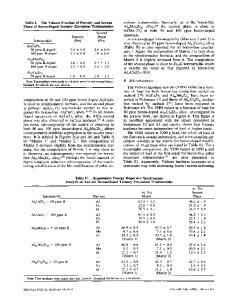Effects of boron and zirconium additions on the fluidity, microstructure and mechanical properties of IN718C superalloy
- PDF / 1,165,248 Bytes
- 10 Pages / 584.957 x 782.986 pts Page_size
- 22 Downloads / 350 Views
fects of boron and zirconium contents from 0 to 0.049 wt% on the casting fluidity, as-cast microstructure and mechanical properties of IN718C superalloy are systematically investigated. The results show that as the B or Zr content increases, the fluidity firstly increases and then decreases. The optimum fluidity is obtained at the pouring temperature of 1470 °C when the content of B is 0.0059 wt% or Zr is 0.042 wt%, respectively. The addition of Zr can lead to the formation of blocky laves phase, but B has no influence on microstructure morphology. Furthermore, the addition of B or Zr can effectively improve the tensile and stress life properties as well as casting fluidity of IN718C superalloy. As compared with IN718C master alloys, the tensile strength can increase 6.2–8.6% and stress life can be improved by 1.3 times when B content is 0.0059 wt%. In addition, when the alloy contains 0.042 wt% Zr, the tensile strength can increase 5.6–7% and stress life can increase 1.076 times than that of the master alloy.
I. INTRODUCTION
Ni-based superalloys possess excellent mechanical properties at elevated temperatures due to their unique composition and microstructure, which thus have been widely used in the fields of gas turbines, rocket motors, spacecraft, nuclear reactors, and so on. 1 To further enhance the mechanical properties of superalloys at moderate temperature, the alloying methods have been applied to improve the structural stability and service temperature.2 Recently, the influence of minor alloying elements, such as magnesium, carbon, phosphorus, boron, and zirconium, have been considerably studied to improve stress rupture and creep properties of superalloys.3–19 Among these alloying elements, boron appears to be effective to reduce the grain boundary surface energy to improve interfacial cohesion at grain boundaries, which subsequently results in a dramatic increase in mechanical properties.7–10 It has been reported that the addition of 0.01–0.012 wt% B could enhance the mechanical properties and increase the service temperature by at least 30 °C.11 However, such addition in IN718 will significantly influence the cast microstructure and solidification behavior due to the strong segregation tendency of B. Zirconium is also one of the beneficial alloying elements Contributing Editor: Mathias Göken Address all correspondence to these authors. a) e-mail: [email protected] b) e-mail: [email protected]. c) e-mail: [email protected] DOI: 10.1557/jmr.2016.383
in superalloys. The reasonable Zr addition can significantly decrease the creep rate, and improve the creep rupture life, notch sensitivity, the plasticity, and machinability.12–14 However, Zr addition in superalloy will significantly increase the hot tearing tendency and influence the performance. In addition, it was realized that small additions of B and Zr were extremely beneficial to the creep-rupture properties of nickel-base superalloys. Floreen and Davidson investigated the influence of B and Zr on the creep and fatigue crack growth behavior of Ni-base superallo
Data Loading...











